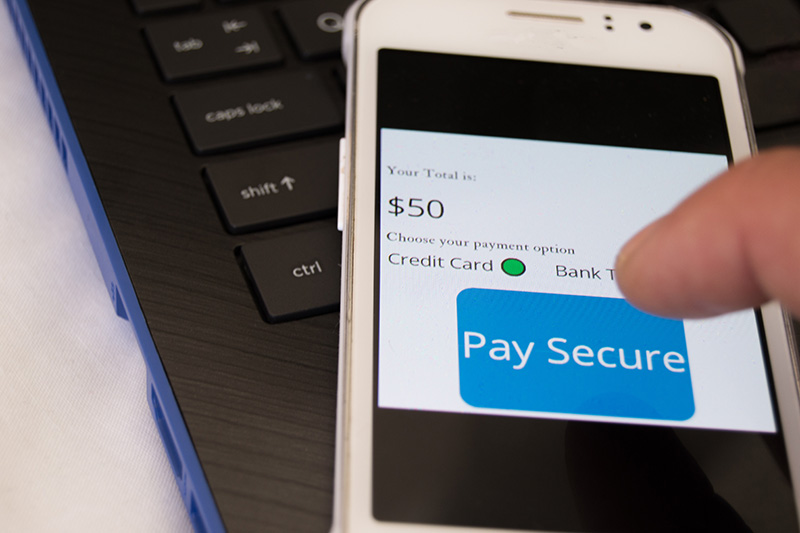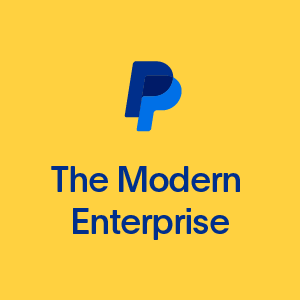Synergized back-end creates an enhanced consumer experience
When you think of an orchestra, you think of harmony – a perfect combination of sounds and systems coming together to create a powerful piece of music.
In business, orchestration is no different. To engage consumers the experience needs to feel seamless and synergized, powered in the back end by a combination of complementary business solutions.

Orchestration saves companies time by providing a seamless backend solution.
“Sometimes, a peek behind a company’s curtain can reveal a non-intuitive, complex e-commerce operation,” said Cindy Turner, PayPal’s Vice-President of Large Enterprise Product and Growth. “There are multiple merchant service providers to consider – fraud protection, acquirers, processors, banking partners, and more – all of which traditionally show up independently. The purpose of orchestration is to find efficiencies in that complexity.”
The goal, she said, is for a simple, single, connected ecosystem of providers.
“This increases efficiency for the merchant and provides a modernized experience for the consumer.”
Adobe and Wayfair are two examples of enterprise companies that have adopted and prioritized orchestration of their backend systems. Executives at both companies say the move has not only changed the way they do business but has improved their successes beyond what they expected.
Matt Wegner, Vice President of Payments and Risk at Adobe, says organizing and restructuring our backend systems was a worthwhile task and one that he prioritized from the beginning of his journey at Adobe.
“From my past experiences, I knew that orchestration was the fastest path to unlocking new opportunities that help accelerate and maximize customer retention and approval rates,” said Matt. “To simplify and enhance our systems, we gathered a team of all-star providers and acquirers.”
Adobe uses PayPal Braintree to integrate popular payment options, including digital wallets, credit, and debit cards, under one platform.
Orchestration Powers Omnichannel Strategy
Wayfair has also synergized its backend, and according to Aanan Contractor, the company’s Vice President of Storefront and Payments technology, it was a critical move for the high-growth business.
Similar to PayPal, Wayfair serves both consumers and businesses, working with suppliers and service providers.
“Two years ago, we started our journey to create an orchestration platform to simplify the life of our business owners so that they can better serve their customers and meet them where they are,” she said.
The global business also recently expanded into brick-and-mortar, opening three stores in Massachusetts. That means synergy on the back end can help power an effective omnichannel experience on the front end.
“The industry naturally defaults to thinking about retail and eCommerce as two distinct segments. As a digitally native retailer, we’ve been thinking long and hard about how we can make these two experiences feel united,” said Aanan. “In-store adds another layer to consider, such as how do we integrate hardware like point-of-sale terminals, API integrations into those terminals, and more.”
“At the end of the day, it comes down to how to offer customers a variety of choices, regardless of channel,” she added.
AI a Critical Component
However, it’s not enough to just have a well-orchestrated platform system, Cindy notes. The key component is having complementary and sophisticated artificial intelligence tools to help consumers feel like they are being served a custom, personalized experience.
Aanan said Wayfair invested heavily in data science from the onset. Today, Wayfair consumers looking to buy an appliance are also simultaneously given financing and payment options up front along with other offers that might entice them to follow through with their purchase.

Giving customers the option to pay how they want is a key driver of conversions.
“Further downstream, using ML and AI, we can better determine what choices in the wallet we are exposing at the point of checkout to help us get the highest likelihood of conversion,” she added. “Also, ML and AI are not just helpful in thinking about how to route traffic, they also help us to manage the upper funnel among our customers.”
The company’s machine learning capabilities earned Wayfair the title of having the “Best Data Science Team of the Year” by MUSE in 2022.
Matt says that the potential of orchestration is far-reaching, and not just for large enterprises but small- and medium-sized businesses can benefit as well.
“I’m a huge believer in orchestration and I think it has the potential to change the rules of the game for a lot of companies,” he said. “Now, large, medium, and small businesses can tap into the benefits of orchestration and the efficiencies it enables.”
“With our orchestration strategy, it is easier to collaborate with others and create more possibilities with better experiences,” he continued.
For more information on how to get started with an orchestration strategy that helps unlock the full potential of eCommerce, visit PayPal Braintree or chat with a representative here.

The Modern Enterprise series explores the issues and opportunities shaping today’s most successful companies. Read about innovations that change the competition, new ways of doing business that consumers have come to expect, and hear from industry leaders on their decisions and the lessons they’ve learned. Read more or sign up for the newsletter here. For more on how PayPal can help your company, visit PayPal for Enterprise.
The content of this article is provided for informational purposes only. You should always obtain independent business, tax, financial, and legal advice before making any business decision.